In May 2025, we spoke with about a dozen superintendents across the country—and others who work closely with them—about challenges stemming from recent national events, including a much smaller United States Department of Education (ED), likely changes in federal Title I funding and oversight, and the various executive orders aimed at shifting more responsibility to the state and local levels. We wanted to know:
- What is the on-the-ground impact of the shifting federal landscape?
- What needs won’t be met because of declines in federal funding or support?
Across big cities and rural communities, school district leaders are navigating serious uncertainties, major funding disruptions, and political challenges. All this “noise” is pushing leaders to stabilize their schools and plan for worst-case scenarios— instead of focusing on improving academic support.
Fears, Concerns, and Worst-Case Scenarios
Leaders said that one of the most challenging things about this movement is that each district is dealing with its own unique realities, depending on state politics and local economic conditions. But they also had many common concerns, including budget and finance issues, the loss of community partnerships for vital student services, and the fear that states might not be able to grab the baton from the feds and provide desperately needed leadership, data, and support.
Budget fears are all-consuming. Most district leaders are tracking federal budget cuts. Many superintendents fear that student welfare and learning readiness could worsen due to cuts in social and health programs. One district leader said her small district already had a $5 million grant for mental health services end two years early.
Uncertainty and confusion around the future of federal K-12 funding compounded preexisting fears. Leaders openly wondered:
- Which federal funds and programs have been, or will be, cut? Will districts be able to backfill to keep critical programs running?
- How will executive orders and lawsuits impact district budgets?
- Will the rules surrounding Title I and IDEA change, or will the funds be block-granted to states?
- If funds are block-granted, how will state governments respond—will they waive their regulations or create new ones? How will this affect districts?
Leaders described a worst-case scenario where federal funds are cut, but regulations and obligations remain. “As [the feds] consolidate funding streams… It’s going to be less money, and we’re going to have more unfunded mandates.” District leaders have little clarity around whether the current federal administration will enforce any of the existing rules on civil rights or equitable provision of services, and whether any changes will be permanent or reversed in four years.
In fact, there has been little to no guidance from the federal government or the states about likely budgetary impacts. This complicates an already-challenging budgeting process in most localities, as enrollment continues to decline and pandemic relief funding runs out. District leaders are now looking to their chief state school officers, governors, and legislators to help them identify the spending, staffing, and service requirements they will still be held accountable for fulfilling (including special education and other federally supported programs).
Lost partners and resources. Leaders also talked of ripple effects from canceled federal grants and contracts and possible consequent changes in philanthropy. They reported already losing valuable support from:
- Nonprofits and community partners that had provided much-needed services and support (via contract) for everything from teacher training and curriculum implementation to social services and after-school support. Many are cutting back services or are in danger of closing due to federal funding cuts (including those by DOGE). One leader we spoke with described the situation as “an absolute crisis of existence” for community-based organizations (CBOs) that rely on federal or philanthropic funding.
- Advice and lesson-sharing from counterparts in other cities. Superintendents have long relied on collegial advice from district leaders in other, similar districts. However, given the variability in local circumstances (e.g., the presence of immigration officials in some districts but not others, canceled federal contracts, the existence of state-level voucher programs), advice from colleagues is no longer as relevant or helpful. “Part of the challenge right now is the variability. Before, there was more consistency in urban districts about what we were experiencing,” said a superintendent.
- States aren’t ready to fill the voids left by the federal government. State education agencies (SEAs) that supported their staffing with federal funds are now announcing layoffs. The consequences have been particularly acute for smaller districts that relied heavily on their SEA for legal support, teacher recruitment, and technical assistance. Leaders in states with significant capacity to help districts were optimistic for themselves but sympathetic to those in states where SEAs function mainly as federal pass-through operations. As one leader said, “Yes, there’s a push that states have more local control, but are states prepared to do any of this work? The answer often is no.”
- National data. Superintendents talked about relying on federal and other national-level data systems to benchmark their progress and identify and validate strategies. With the cancellation of key national-level data systems managed by NCES or IES (e.g., the Common Core of Data, NAEP, the Annual Survey of School System Finances), district leaders have lost essential sources of information. They would like their states to continue to track, or even expand, the data formerly collected by the feds so they can better understand how they are serving students and “hold ourselves even more accountable for these outcomes.” Another noted that “our progress is our north star,” underlying how important these data have been to district leaders’ decision-making.
The sum of all fears: Trying to manage through the noise. Superintendents are worried that any hard-won academic progress made since the pandemic will be challenging to maintain in this chaotic environment. District leaders are “trying to manage through the noise” by, for example, carrying on with day-to-day work while preparing in advance for worst-case scenarios (e.g., continued enrollment declines, disruptions due to immigration raids, loss of needed programs to help the most disadvantaged, changing DEI programs, loss of SEL programs). “I tell my colleagues, ‘Don’t overreact, stay nimble, and be careful about making long-term decisions… when we don’t know what will be a long-term versus short-term change.’”
They exuded confidence that they would “step up” and maintain services for various student groups as long as the funding remained, even without continued enforcement from the federal government. But they worry about addressing school-level issues in special education, staffing, and chronic absenteeism wrought by federal shifts. As one said, “How do we manage all of these shifting conditions and still build the solutions to [meet student needs]?” In this fraught environment, leaders are more focused on holding things together than major changes in instruction or teacher roles. They are focused on what is possible in the short run: supporting welcoming and instructionally focused schools.
Possible Silver Linings
District leaders are starting to ask themselves what the disappearance of federal “regulatory overhang” allows them to do, noting “we [currently] do so much compliance work.” Some hope state superintendents and legislative committees won’t remain paralyzed by federal regulatory ambiguity: they want state actors to decide whether to continue, change, or jettison former federal rules now, not after districts have been crippled by confusion.
One leader argued that districts need to be pushed to innovate at this moment: “There is an exciting and incredible opportunity for traditional public school systems to rethink their relationship with school choice and create opportunities… to rethink learning systems; to ask ‘Who can teach?… Where can we teach?’ …to shift the relationship with school facilities. School systems will need to be pushed to take advantage of these opportunities. Otherwise [districts] will cease to exist.”
Some felt deregulation at the federal level could open the door for states to pilot and test innovative solutions. Others hoped that their state legislators would trim regulation or that districts would leverage AI, new public school choice programs, or opportunities for high school students to take college courses.
One district leader emphasized staying focused on possibility in a chaotic time: “I’m not trying to diminish how bad everything is, but I will say there are folks who are now asking: what can we actually dig into besides the fear and lack of federal overhang and confusion at the federal level?… We’re using it as an opportunity to focus and prioritize and innovate without federal oversight.”
Implications and Recommendations
Since we spoke with these leaders, the Department of Education announced in early July that it would withhold nearly $7 billion in spending that Congress had already approved. The fears of some of those we spoke with are quickly becoming reality.
How district and state education leaders respond to federal cuts is the question at hand. Will districts stay stuck in past practices? Or will educators find ways to use this crisis to deliver educational opportunities in new and more effective ways?
Right now, districts need clarity from their states, especially about which rules remain in place and how funding is likely to change over the next few years. States should help districts adapt to tighter fiscal realities and incentivize creative staffing models and other out-of-the-box solutions. States should also assess how to remove unnecessary compliance reporting and overly bureaucratic rules that tie districts’ hands. And everyone should use this moment to push for overdue changes like expanded public school choice options.
States that lost federal funding still need to find a way to support districts effectively, especially small and rural districts. It may be time to consider district consolidations and other efficiencies. More than anything, states and support organizations should help districts sort through the noise to focus on the core work of advancing literacy, pushing for more post-secondary pathways, and navigating the realities of emerging technologies like AI.
Similarly, schools need clarity from their districts, especially about deviating from the one-teacher, one-classroom model and providing new kinds of support for children who have fallen behind. As the “federal overhang” recedes, districts can also reduce the parts of their central offices devoted to compliance and put as much money as possible into direct services to kids.
In the absence of federal data and research, states and philanthropies need to support research and development on how districts can adapt to budget crises, as well as on the uptake of high-quality and AI-based curricula. States and philanthropies can also provide more nimble support to school districts dealing with fast-moving realities. As one leader said, “It’s a new day for superintendents. They need readily available resources to respond…Whatever we can do to help people where they are—they need very quick resources.”
The leaders we interviewed had a general air of fatigue about them. Some joked that after getting through the pandemic, they were not thrilled to be dealing with another period of uncertainty. One called the situation a “nightmare.” At the same time, they were determined to stay focused and forge opportunities where possible. CRPE will continue to track and share how leaders are responding to these challenges.






